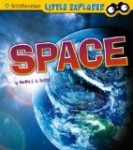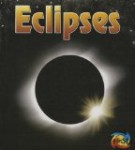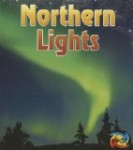If you took your child out to watch the Quadrantid meteor shower this morning, you might have sparked an interest in space and astronomy. Here are five beginning readers to help you find out more:
Space (Smithsonian Little Explorer) by Martha E. H. Rustad is a quick introduction to topics ranging from the moon and planets to the Big Bang. Colorful photographs and eye-catching illustrations help keep interest and put things in perspective. See how many Earths placed on top of each other would equal the height of the sun. Fascinating!
Reading Level grades 1-2
Publisher: Capstone Press (November 1, 2013)
ISBN-10: 1476535515
ISBN-13: 978-1476535517
Comets (Heinemann First Library: the Night Sky and Other Amazing Sights in Space) by Nick Hunter explains how these bits of dust and ice orbit the sun in our solar system. Starting with ancient records of comets, Hunter describes some of the most famous comets and how they were discovered, He concludes with an activity using balls and a playing field to help children conceptualize the vastness of space.
Reading Level: Grades 1-3
Publisher: Heinemann (August 1, 2013)
ISBN-10: 1432975196
ISBN-13: 978-1432975197
As you may know, learning the names of the patterns certain stars make in the sky can help you navigate at night or find the best part of the sky to watch for meteors. Stars and Constellations (Heinemann First Library: The Night Sky: And Other Amazing Sights in Space) by Nick Hunter explores what stars are, where they come from, what makes them shine, what people thought of them in the past, and how we study stars today, starting with the nearest star, the Sun. A fun activity is provided along with advice on viewing stars.
Reading Level: Grades 1-3
Publisher: Heinemann (August 1, 2013)
Language: English
ISBN-10: 143297517X
ISBN-13: 978-1432975173
Eclipses (Heinemann First Library: The Night Sky: And Other Amazing Sights in Space) by Nick Hunter (Author) examines both solar and lunar eclipses, as well as eclipses on other planets. The book covers what an eclipse is, what eclipses can look like, how they happen, what people thought of eclipses in the past, and how they are studied today. He concludes with an activity, along with advice on viewing eclipses.
Reading Level: Grades 1-3
Publisher: Heinemann (August 1, 2013)
Language: English
ISBN-10: 1432975153
ISBN-13: 978-1432975159
Northern Lights (Heinemann First Library) by Nick Hunter covers some of the coolest phenomena we can see without a telescope: the Aurora Borealis or Northern Lights. He explains what they are, what they look like, where they can be seen, and how they are caused. Readers also learn about the significance of solar storms, the Southern Lights, what people thought about auroras in the past, and how they are explored today. As with the other books in this series, he concludes with a fun activity.
Reading level: Grades 1-3
Publisher: Heinemann (August 1, 2013)
Language: English
ISBN-10: 1432975161
ISBN-13: 978-1432975166
Be sure to visit Science Books for Kids for a more extensive list of Space and Astronomy books for children.
Disclosures: These books were provided by the publisher for review purposes. Also, I am an affiliate with Amazon so I can provide you with cover images and links to more information about books and products. As you probably are aware, if you click through the highlighted title link and purchase a product, I will receive a very small commission, at not extra cost to you. Any proceeds help defray the costs of hosting and maintaining this website.
Come visit the STEM Friday blog each week to find more great Science, Technology, Engineering and Math books.








